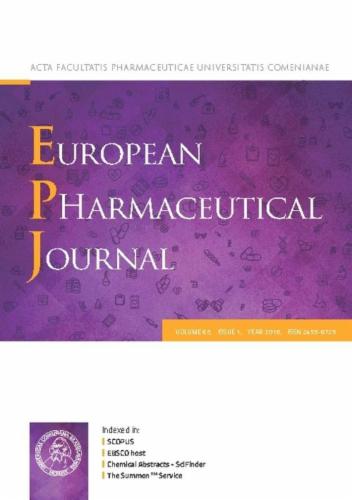评估 DNA 链接抑制剂抗体和 AlphaScreen 分析法,以高通量筛选针对甲型流感聚合酶帽结合域的化合物。
IF 4.3
3区 医学
Q1 PHARMACOLOGY & PHARMACY
引用次数: 0
摘要
流感病毒聚合酶复合体的PB2亚基对病毒复制至关重要,主要通过一种被称为cap-snatching的机制进行复制。在这个过程中,PB2结合到宿主前mrna的5´cap结构上,使病毒聚合酶能够劫持宿主的转录机制。这种结合促进了被盖住的RNA片段裂解并整合到病毒mRNA中,从而促进了病毒的高效复制。因此,抑制PB2-cap相互作用至关重要,因为它直接破坏了病毒复制周期。因此,用特异性抑制剂靶向PB2是开发抗流感抗病毒药物的一种很有前途的策略。然而,目前还没有高通量筛选潜在抑制剂的方法。开发新的潜在PB2结合物抑制剂筛选方法是本研究的重点。在这项研究中,我们提出了两种新方法,DIANA和AlphaScreen,用于筛选流感PB2帽结合抑制剂,并与已建立的差示扫描荧光法(DSF)技术比较它们的有效性。使用基于先前描述的PB2结合剂pimodivir的多种底物和化合物,我们彻底评估了这些新方法的能力。我们的研究结果表明,DIANA和AlphaScreen对PB2抑制剂的筛选都非常有效,与等温滴定量热法(ITC)和表面等离子体共振(SPR)等传统技术相比,具有明显的优势。这些优点包括改进的可伸缩性、减少的样本需求以及无标签检测的能力。值得注意的是,DIANA能够从单井测量中确定Ki值,大大提高了其在抑制剂筛选中的实用性和效率。这项研究在开发更有效和可扩展的筛查策略方面迈出了重要一步,有助于推进发现抗流感抗病毒药物的努力。本文章由计算机程序翻译,如有差异,请以英文原文为准。

The evaluation of DNA-linked inhibitor antibody and AlphaScreen assays for high-throughput screening of compounds targeting the cap-binding domain in influenza a polymerase
The PB2 subunit of the influenza virus polymerase complex is essential for viral replication, primarily through a mechanism known as cap-snatching. In this process, PB2 binds to the 5’ cap structure of host pre-mRNAs, enabling the viral polymerase to hijack the host transcriptional machinery. This binding facilitates the cleavage and integration of the capped RNA fragment into viral mRNA, thereby promoting efficient viral replication. Inhibiting the PB2-cap interaction is therefore crucial, as it directly disrupts the viral replication cycle. Consequently, targeting PB2 with specific inhibitors is a promising strategy for antiviral drug development against influenza. However, there are currently no available methods for the high-throughput screening of potential inhibitors. The development of new inhibitor screening methods of potential PB2 binders is the focus of this study.
In this study, we present two novel methods, DIANA and AlphaScreen, for screening influenza PB2 cap-binding inhibitors and evaluate their effectiveness compared to the established differential scanning fluorimetry (DSF) technique. Using a diverse set of substrates and compounds based on the previously described PB2 binder pimodivir, we thoroughly assessed the capabilities of these new methods. Our findings demonstrate that both DIANA and AlphaScreen are highly effective for PB2 inhibitor screening, offering distinct advantages over traditional techniques such as isothermal titration calorimetry (ITC) and surface plasmon resonance (SPR). These advantages include improved scalability, reduced sample requirements, and the capacity for label-free detection. Notably, DIANA's ability to determine Ki values from a single-well measurement significantly enhances its practicality and efficiency in inhibitor screening.
This research represents a significant step forward in the development of more efficient and scalable screening strategies, helping advance efforts in the discovery of antiviral drugs against influenza.
求助全文
通过发布文献求助,成功后即可免费获取论文全文。
去求助
来源期刊
CiteScore
9.60
自引率
2.20%
发文量
248
审稿时长
50 days
期刊介绍:
The journal publishes research articles, review articles and scientific commentaries on all aspects of the pharmaceutical sciences with emphasis on conceptual novelty and scientific quality. The Editors welcome articles in this multidisciplinary field, with a focus on topics relevant for drug discovery and development.
More specifically, the Journal publishes reports on medicinal chemistry, pharmacology, drug absorption and metabolism, pharmacokinetics and pharmacodynamics, pharmaceutical and biomedical analysis, drug delivery (including gene delivery), drug targeting, pharmaceutical technology, pharmaceutical biotechnology and clinical drug evaluation. The journal will typically not give priority to manuscripts focusing primarily on organic synthesis, natural products, adaptation of analytical approaches, or discussions pertaining to drug policy making.
Scientific commentaries and review articles are generally by invitation only or by consent of the Editors. Proceedings of scientific meetings may be published as special issues or supplements to the Journal.

 求助内容:
求助内容: 应助结果提醒方式:
应助结果提醒方式:


